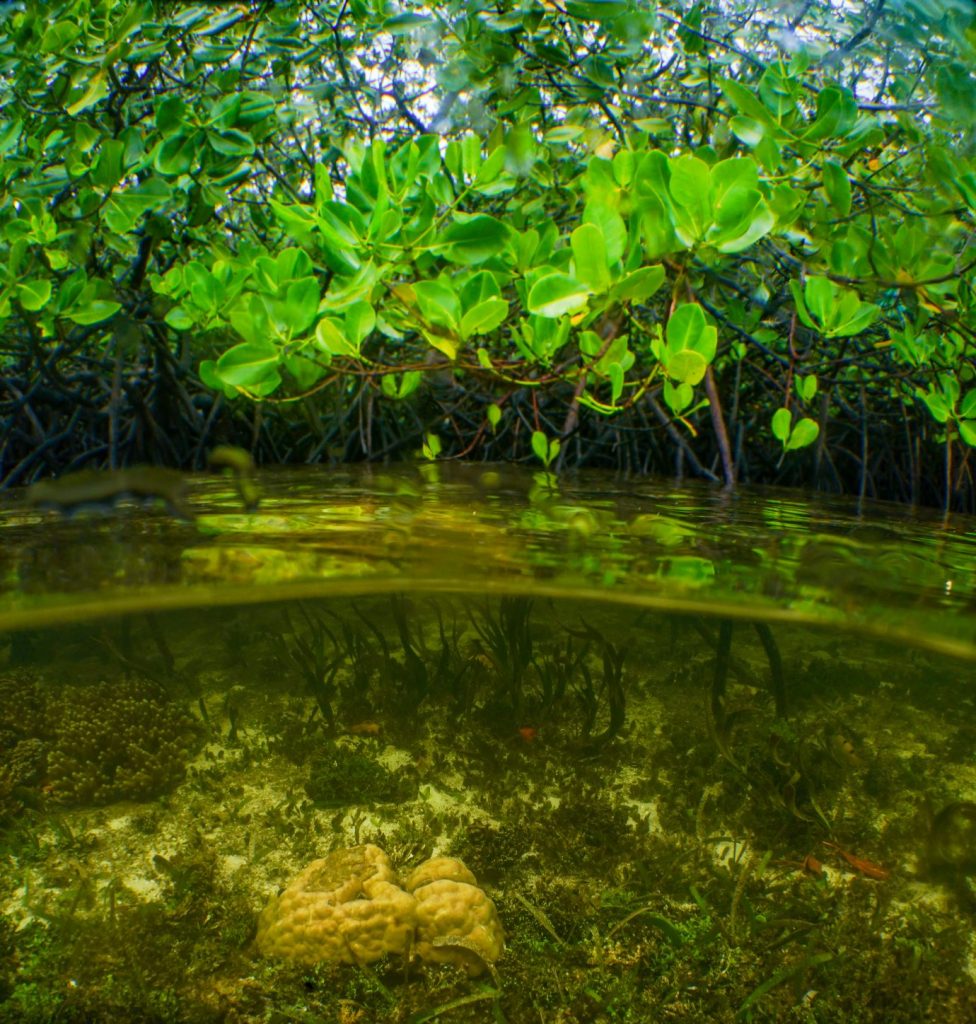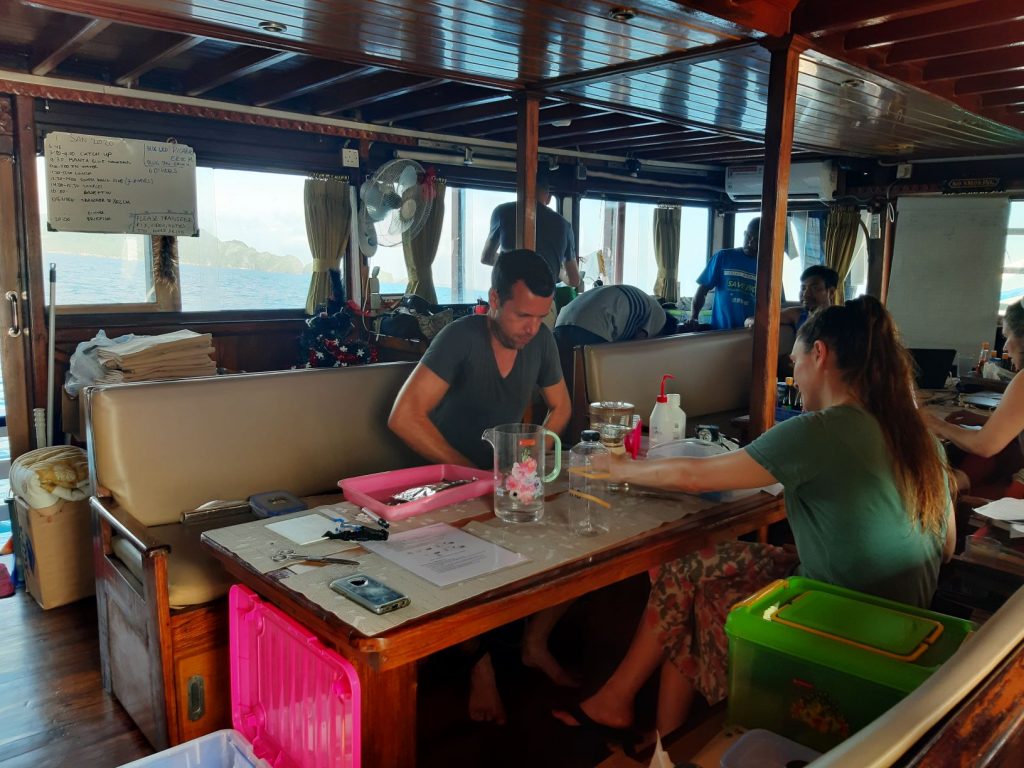Learning across disciplines
The guide is carefully steering the dinghy towards the mangrove-covered shore. His assistant stands in the front on the lookout. The last few meters he carefully pushes it towards the mangrove using his pole while avoiding the corals. We are doing some water quality measurements with the students at different distances and depths from the resorts, homestays, villages and mangroves in several places on our trip. We want to see if there are different levels of nutrient or sediment outflow near human activities in the region. This may help inform our joint project proposal.
Abracadabra
A key objective of our expedition is to learn across different disciplines about the impacts of tourism in Raja Ampat. I am an environmental sociologist. Seeing researchers from other disciplines in action helps. In preparing for the expedition I read all the protocols and listened to the introductory talks, but some of the terms used remained ‘abracadabra’. At the recap on the first evening of our expedition, after having snorkeled above the dive team assessing the state of the reef at 5 meters depth, I proudly claimed: “Now I know what a transect is!”.

At the same time the natural scientists also joined us ashore on our visits to villages conducting semi-structured interviews with our Indonesian colleagues. The aim was to explore the perspective of villagers on the impacts of tourism development both above and below the water. On one of these occasions Pa Ery, an Indonesian PhD researcher, skillfully gains trust by moving from courtesy questions to more critical issues. As Erik, a marine biologist and underwater photography expert, observes the interview he whispers in my direction: “This way an hour can pass easily.”
Organic samples
Back to the mangrove. One of the students asks: “Depth?” “0.9 meters” replies Eva, a behavioural economist. Cyano? 3.1. Total? 3.3. Turbity? 0.0. It is my task to write everything down on a score sheet. Some of the measurements require nothing more than sticking an instrument into the sea and noting down the result. For others, there is a strict protocol of multiple steps. For example, for most biological samples the processing that needs to be done on the ship is lengthy and detailed.

Organic samples need to be systematically labelled, carefully inserted into an aluminium foil pocket, dried in a rice cooker and brought back to the lab in Wageningen
It is encouraging to see the dedication and work ethic of everybody on board, working non-stop for hours in order to secure the data. For example organic samples need to be systematically labelled in terms of species name, day and place, carefully inserted into an aluminium foil pocket, dried in a rice cooker and brought back to the lab in Wageningen to be tested by the students on isotopes. This can reveal the type and level of pollutants that the organism has been exposed to. Potentially powerful results, also for social scientists, which we can use in our interviews or participatory approaches with key decision makers.

